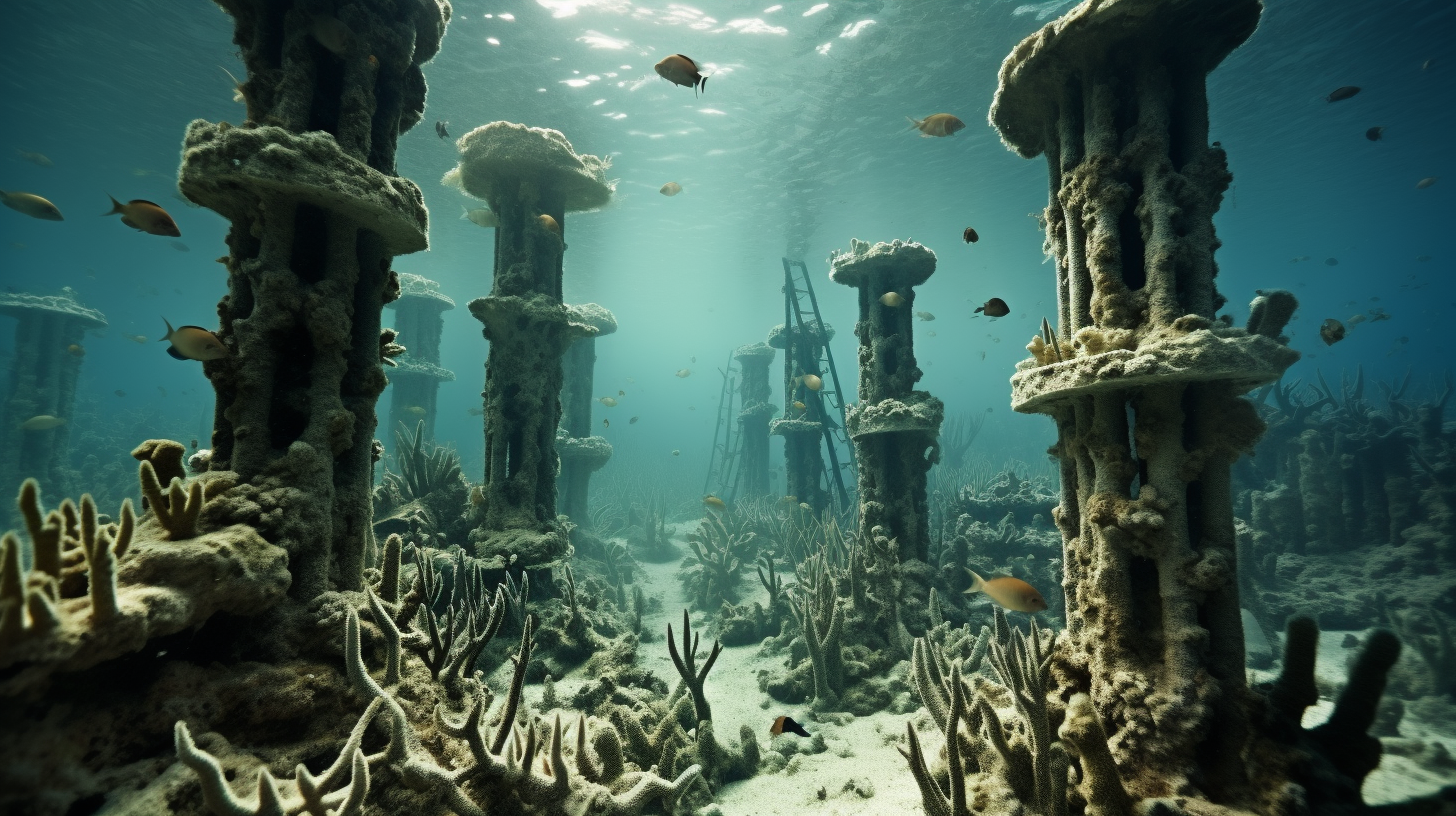In an era where the symbiotic majesty of our oceans has been transformed into a canvas of despair, our coral reefs have not been spared from this grisly metamorphosis. The world below the surface, which thrived with a kaleidoscopic array of life, now stands as a stark metaphor of our own making – the Coral Catacombs, a testament to a legacy of environmental apathy.
Where vibrant life once pulsed with every color imaginable, these underwater graveyards now expand, a mirror to the heart-wrenching tales of ‘Acid Seas – The Devouring of the Depths’ and the haunting void narrated in ‘Barren Oceans, Barren Futures – The Fish That Disappeared’. Here, amidst the hollow whispers of currents, lie skeletal remains of corals, bleached and brittle; architects of the sea now victims to its unrelenting change.
The harbingers of doom that we’ve heard of in countless narrations—such as rising temperatures, acidifying waters, and the relentless assault of pollutants—have exacted their toll on the once resplendent coral ecosystems. And as these architects perish, so do the multitudes of marine species that depend on them. Where there was once life and shelter, there is now desolation.
A chilling tour through these forsaken depths reveals the once-thriving reefs transformed into ghostly structures. Alabaster branches intertwine with the ocean’s swells, a macabre dance of death and beauty. Scientists once optimistically termed this phenomenon ‘coral bleaching,’ as if someday, color might return. But within these pages, we know the truth: there is no rebirth at the end of this story.
As our journey through the Coral Catacombs continues, the specter of what was becomes painfully clear. Fish, crustaceans, and the very algae that painted life into corals themselves, all vanished. Swept away by the relentless tide of our indecision and inaction. The domino effect of marine desolation that began with acidification and anoxia presents an eerie silence where there was once a cacophony of life.
It’s within this silence that we’re forced to confront a difficult question: what could have been had we acted with the urgency that the cascading marine crises demanded? The answers are as empty as the Coral Catacombs themselves. It’s here, amidst the skeletal remains of a once-thriving oceanic wonder, that we not only explore the extent of the disaster but are also blind witnesses to the irreversible damages of a war waged by humankind against the very lifeblood of our planet.
Marine experts and environmentalists had long cautioned about the disasters looming on the horizon. They warned us of nature’s delicate balance, now toppled by the sheer force of anthropogenic pressures. Our relentless pursuit of development, convenience, and economic growth finds its echo in the remnant ruins—each coral branch, a story of loss; each empty reef, a chapter concluded.
To end our voyage through these deep blue corridors, one might seek solace in possible solutions or tales of restoration. Yet, the fabric of our narrative holds no such warmth. The Coral Catacombs are expanding still, and with each new day, a remembrance that we have passed the point where action might have yielded hope.
